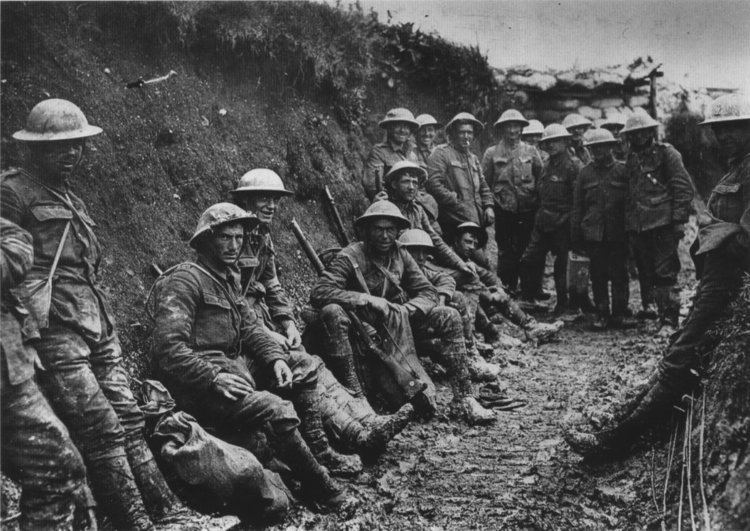Active 1914–191938–40 | Country United Kingdom Type Infantry | |
 | ||
Engagements Battle of Neuve ChapelleBattle of Aubers RidgeBattle of the SommeBattle of Passchendaele | ||
The 8th Infantry Division was an infantry division of the British Army that was active in both World War I and World War II. The division was first formed in October 1914 during World War I, initially consisting mainly of soldiers of the Regular Army and served on the Western Front throughout the war, sustaining many casualties, before disbandment in 1919. The division was reactivated in Palestine, under the command of Major-General Bernard Montgomery, in the late 1930s in the years running up to the Second World War before being disbanded in late February 1940. It was briefly reformed in Syria in an administrative role during 1942-3.
Contents
First World War
The 8th Division was a Regular Army division that was formed by combining battalions returning from outposts in the British Empire at the outbreak of the First World War. Major-General Francis Davies took command on 19 September 1914. The division moved to France in November, 1914, following the First Battle of Ypres. The division fought on the Western Front for the duration of the war, taking part in the Battle of Neuve Chapelle, the Battle of Aubers Ridge, both in 1915, the Battle of the Somme, in 1916, and the Battle of Passchendaele in 1917.
First World War Order of Battle
Between October 1915 and July 1916, the 24th Brigade swapped with the 70th Brigade from the 23rd Division.
The 70th Brigade was from the 23rd Division and was attached to the 7th Division between October 18, 1915 and July 15, 1916, swapping with the 24th Brigade.
Second World War
The 8th Infantry Division was never a full strength formation during the Second World War. In 1939 it was based in Palestine and consisted of two infantry brigades (14th and 16th Brigades). Due to the needs of defence against German and Italian forces these units were sent to places of need and reformed as different formations. Although it had infantry it had no divisional troops due to the shortage of artillery and engineers in the Middle East. Its units were dispersed and the Division was disbanded on 28 February 1940.
The Division headquarters was reformed in Syria on 2 June 1942 from the headquarters of the 5th Cavalry Brigade with an administration and internal security role under the Ninth Army. On 3 September the divisional headquarters role was taken by the headquarters of 89 Sub-Area, 9th Army (Lines of Communications). In this second incarnation R.A.C. units from 9th Army were attached. The division Headquarters were disbanded on 31 October 1943.
Order of Battle 1939
Order of battle in 1939:
General Officers Commanding
Commanders included:
